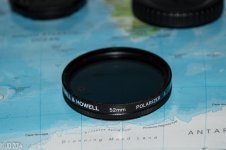Mineores
Senior Member
Hello, I'm going to Iceland next month so I think my polarizing filter will come in handy for landscape shots! Anyway, I went to the field behind my house and took some photo's because it was rather sunny this afternoon.
Looking for advice on how to use the Polarizing filter better, and generally improve my landscape photos.
They were all taken with the 18 - 55mm Kit lens at 18mm. Rest of my stuff is in my sig.
The photo uploader has pretty much broken so here's a Imgur album:
Testing Polarizing Filter - Imgur
thank you!
Looking for advice on how to use the Polarizing filter better, and generally improve my landscape photos.
They were all taken with the 18 - 55mm Kit lens at 18mm. Rest of my stuff is in my sig.
The photo uploader has pretty much broken so here's a Imgur album:
Testing Polarizing Filter - Imgur
thank you!



